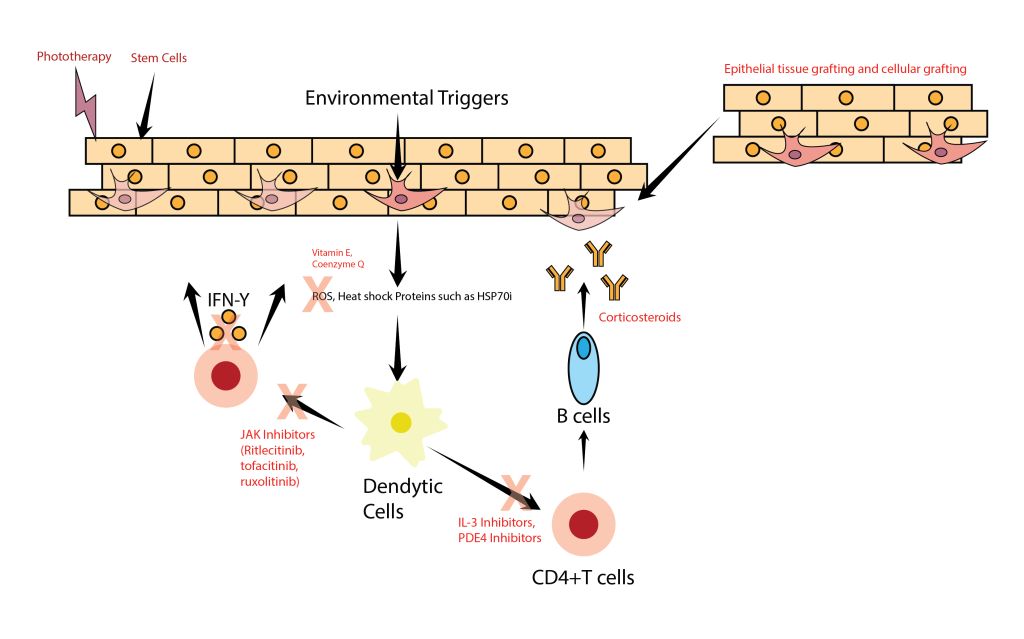Non-segmental Vitiligo
Vitiligo is a condition in which some of the skin loses its pigmentation (color), causing patches of lighter skin to appear. The loss of pigmentation occurs when cells that produce pigment, called melanocytes, are destroyed.
Non-segmental vitiligo, also known as generalized or bilateral vitiligo, is the most common type of vitiligo, characterized by the loss of pigment (depigmentation) in patches of skin all over the body, often appearing symmetrically on both sides.

Segmental vitiligo (the less common type) is thought to be caused by chemicals released from the nerve endings in your skin. These chemicals are poisonous to the melanocyte skin cells.
Primarily viewed as a skin condition, vitiligo can also affect hair, eyes, inner ear, and mucous membranes (inside the mouth and nose). It’s often seen on the face, dorsal hands, or feet.
What causes Non-segmental Vitiligo?
In vitiligo (non-segmental), external trauma induces DAMPs, HSPs and oxidative stress in keratinocytes and melanocytes, resulting in chemokine production. CXCL9/10/12/16 and CCL5 recruit cytotoxic T cells to the skin, which are less restrained when attacking melanocytes due to impaired Treg activity. Antigens of apoptotic melanocytes are taken up by antigen-presenting cells, increasing production of anti-melanocytic T cells. Memory T cells settle into lesional skin, limiting repigmentation and inducing disease relapses.

Risk Factors
- Other members of your family have it
- There's a family history of other autoimmune conditions – for example, if one of Your
- parents has pernicious anaemia (an autoimmune condition that affects the stomach) You have another autoimmune condition
- You have melanoma (a type of skin cancer) or non-Hodgkin lymphoma (cancer of the lymphatic system
- You have particular changes in your genes that are known to be linked to non-segmental vitiligo
